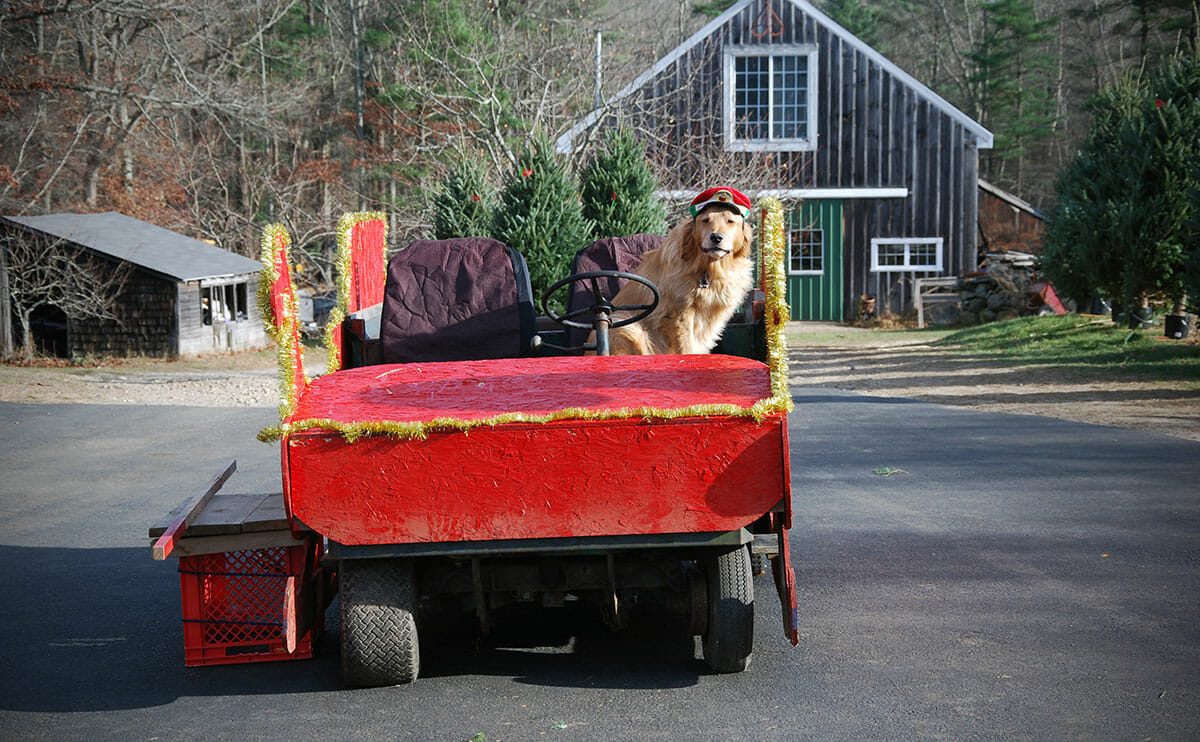He’s not kidding: The competition for the United States’ $1 billion Christmas tree industry is fierce. Each year farmers who sell directly to customers must go head to head with tree lots and big box stores like Home Depot – the largest seller of Christmas trees – who offer low discounts and convenient locations. Like […]

He’s not kidding: The competition for the United States’ $1 billion Christmas tree industry is fierce. Each year farmers who sell directly to customers must go head to head with tree lots and big box stores like Home Depot – the largest seller of Christmas trees – who offer low discounts and convenient locations.
Like many other small farmers, Christmas tree sellers have realized that it’s customer relationships – not slashed prices – that will keep them in business. “The tree is very important,” Dick Moore of Moore’s Tree Farm in Lansing, New York says, “For many folks it’s the centerpiece of their Christmas experience.” Savvy farmers like Moore are taking advantage of individuals wishing to create a holiday tradition from their tree purchase. By providing additional forms of entertainment to buyers, he can turn the drive to his farm into an annual pilgrimage to a winter wonderland.
[mf_mosaic_container columns=”2″ captions=”no”]
[mf_mosaic_item src=”https://modernfarmer.com/wp-content/uploads/2013/12/xmas1.jpg”]
[mf_mosaic_item src=”https://modernfarmer.com/wp-content/uploads/2013/12/xmas2.jpg”]
[mf_mosaic_item src=”https://modernfarmer.com/wp-content/uploads/2013/12/xmas3.jpg”]
[/mf_mosaic_container]
In addition to the usual Santa Claus appearances, hot cider and cocoa, Moore provides pony-pulled tree-sleighs and a 40-foot “mulch mountain” for kids, made partially out of old Christmas trees. On select weekends, you can even get fluffy Newfoundland dogs to pull your Christmas tree out of the plantation and straight to your car. Talk about a family photo.
At Evergreen Farms in Texas, they offer a petting zoo, pine cone painting and a campfire where people can warm up after cutting their trees. Beth Walterscheidt, one of the farm’s owners, estimates that they see 75 to 80 percent of their customers return each year. Every tree farmer she knows runs a similar operation. “We all do something to make it worthwhile to come out,” she says.
While you won’t find Santa Claus anywhere near Van Houten’s Christmas trees, buying one of his trees from the Union Square Greenmarket is its own form of holiday tourism for many New Yorkers. With a location right next to the candy-cane striped holiday market, Van Houten is one of the few Christmas tree sellers in the NYC Greenmarkets.
But while the market is big, there are significant risks with evergreen growing. Christmas trees require year-round maintenance, they take seven to ten years to grow and they have a sales season little more than a month long. If you still have cut trees sitting around on Christmas Day, you could find yourself barely breaking even for the year. Some farmers like Walterscheidt and Moore are retired from previous careers and rely on Christmas tree sales as a sole source of working income. Others, like Van Houten, use Christmas tree sales to fund their other farming businesses through the cold season. Overall, it represents about 10 percent of his year’s income.
While added-value products like jams or baked goods are an important source of income for small farmers, on a cut-and-carry Christmas tree farm, it’s more like marketing. Moore’s tree farm, like so many others, offers wreaths, greenery, and a gift shop with ornaments for customers. “But trees are definitely our main focus,” he says. “The extras are simply add-ons for what people might need or want.”
A 2008 article estimated that U.S. farm income generated from agritourism was between $800 million and $3 billion per year. It’s an important form of diversification for small farmers who might not be able to compete on price but can provide a pastoral setting for families to visit. As people’s interest in getting back to the land keeps rising, demand for forms of agri-tainment will only increase.
While there are no exact numbers on how many small Christmas tree farmers there are, 16 percent of buyers reported purchasing their trees from a cut-and-carry lot in 2012. Because many cut-your-own businesses also offer pre-cut trees, an additional percentage of Christmas tree pilgrims also purchased their tree from one of these small farms. That’s well over 5 million people taking advantage of holiday agritourism.
All this from an industry that didn’t even exist until 50 or 60 years ago. Despite the long history of decorating evergreens near the winter holidays, the first commercial Christmas tree farm wasn’t planted until 1901. Even in the 1940s, 90 percent of Christmas trees were still harvested from the forest. Today, over 95 percent come from commercial plantations. Christmas tree sales provide an important source of income during the season when many produce farmers have no other items to sell.
Buying from a big box store may be the quickest fix for people who just want to grab a tree and be done with it. But it’s the people who want a little extra holiday spirit who keep small farms around the United States hauling in Santas, cocoas and sleighs year after year.
are chemicals used on Christmas trees to prevent leaf drop? I am told by one worker that antifreeze is used on the leaves but this doesn’t make sense. The leaves drop when the tree is in a warm, indoor environment.